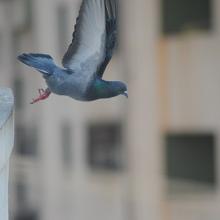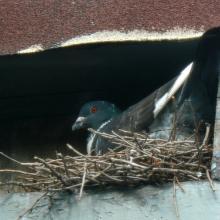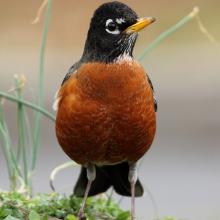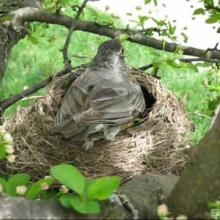

Join BirdNote tomorrow, November 30th!
Illustrator David Sibley and actor H. Jon Benjamin will face off in the bird illustration battle of the century during BirdNote's Year-end Celebration and Auction!
Waterfowl like this Muscovy duckling spend up to 30 days in the egg, so they’re able to walk, swim, and feed themselves as soon as they hatch. We call these chicks precocial. By contrast, the chicks of most songbirds spend less time maturing in the egg. They must continue to develop in the nest before heading out on their own. We call these hatchlings altricial since they depend on their parents to care for them.
Support for BirdNote comes from the Cornell Lab’s Bird Academy, with online courses for people of all knowledge levels. More at AllAboutBirds.org.
BirdNote®
From Egg-laying to Hatching and Beyond
Written by Frances Wood.
This is BirdNote.
[Calls of newly hatched goslings]
These baby geese — or goslings — are leaving the nest. Goslings are a familiar sight, because almost as soon as they hatch, they’re up and walking.
[Sounds of Mallards, water]
Ducklings, goslings, and other waterfowl spend up to 30 days in the egg, so they are able to walk, swim, and feed themselves as soon as they hatch. We call these chicks precocial because they seem to be mature beyond their age, like precocious children.
By contrast, the babies of pigeons, robins, and most songbirds spend less time — perhaps only two weeks — maturing in the egg.
[Rock Pigeons cooing]
They hatch blind, naked, and helpless and must continue to develop in the nest before heading out on their own. We call these chicks altricial — needing to be nourished — since they depend on their parents to feed and protect them. By the time these juvenile birds leave the nest, they’re the same size and shape as the parents, and often we don’t recognize them as young birds.
So, downy chicks following their mother around are precocial. Naked, helpless, nest-bound babies are altricial.
[Calls of newly hatched goslings]
For BirdNote, I’m Mary McCann.
Support for BirdNote comes from the Cornell Lab’s Bird Academy, with online courses for people of all knowledge levels. More at All About Birds dot org.
###
Senior Producer: John Kessler
Production Manager: Allison Wilson
Producer: Mark Bramhill
Associate Producer: Ellen Blackstone
Sounds of the birds provided by The Macaulay Library of Natural Sounds at the Cornell Lab of Ornithology, Ithaca, New York. Goslings recorded by A.L. Priori; Mallards by A.A. Allen; Rock Pigeon by A.L. Priori.
BirdNote’s theme was composed and played by Nancy Rumbel and John Kessler.
© 2021 BirdNote May 2021 Narrator: Mary McCann
ID# 060905hatch hatch-02b












